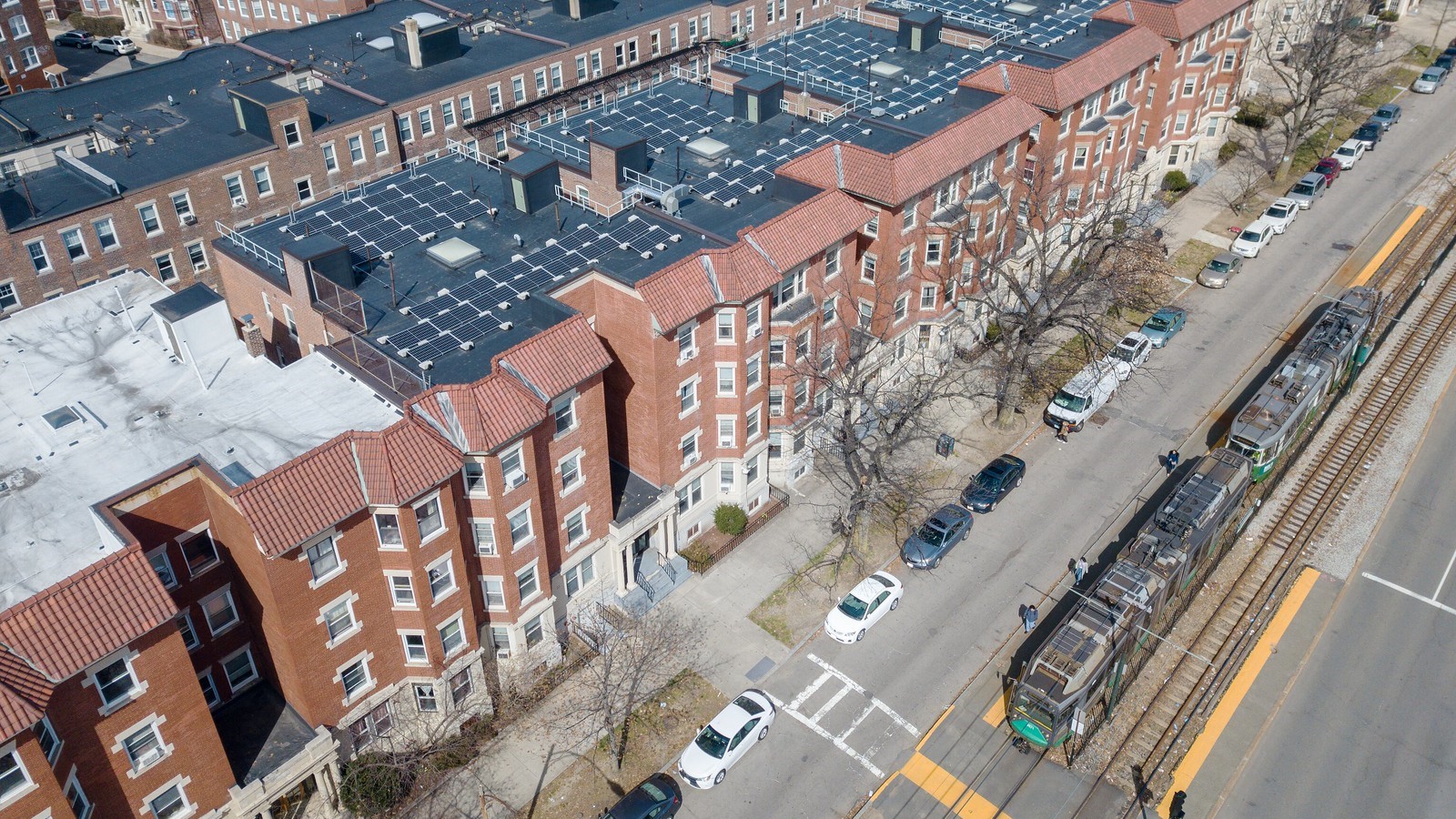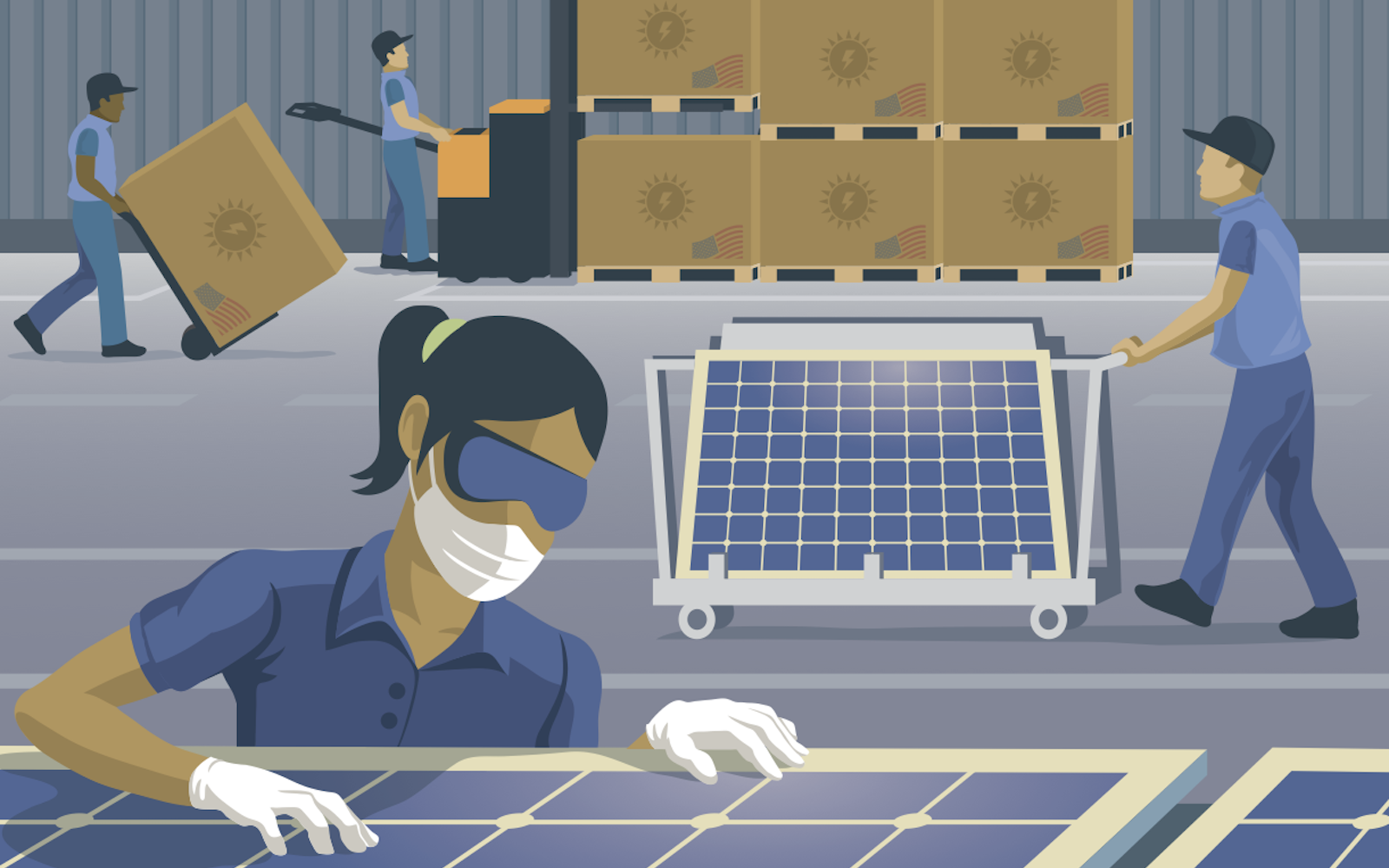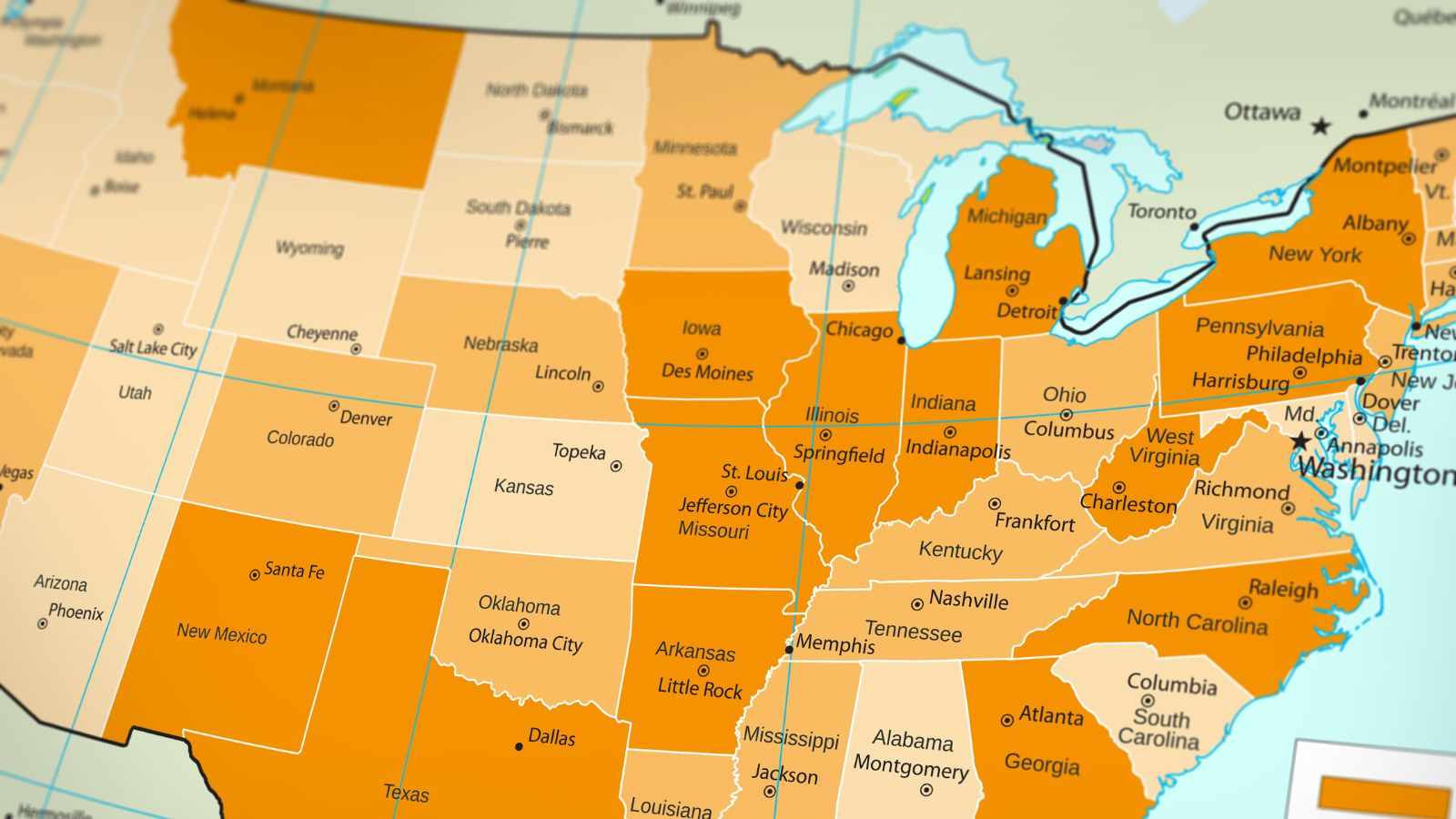Every day, Americans are struggling with the cost of housing. The cost of rent is too high and homes are too expensive for most hard-working families to afford. Forty-two million U.S. families are “cost-burdened,” meaning they spend more than 30 percent of their income on housing, and one in four renters pay more than 50 percent of their income on housing. These extreme burdens can mean unacceptable choices—with families forgoing everyday needs like food and healthcare, much less savings for retirement.
Families are also struggling with the costs of transportation. U.S. households spend, on average, 15 percent of their income on transportation, with low-income households spending as much as 30 percent of their income on transportation (and even more if they own a car). Decades of policies that have encouraged urban sprawl have led to long commutes and dependence on cars, increasing household transportation costs and making transportation responsible for 28 percent of US climate pollution. Housing policy that creates affordable homes where people can live close to their daily needs is a key climate solution that also puts more money in people’s pockets.
We all deserve affordable, energy-efficient, healthy, and resilient homes that protect us from heat waves and winter storms without polluting the air inside our homes or in our communities. Pollution from burning fuel in buildings is now responsible for more health impacts than burning coal, as well as generating 13 percent of U.S. climate pollution. With state-of-the-art efficient equipment, we can now upgrade our homes to use clean electricity for space heating, hot water heating, and cooking. Upgraded electric homes can reduce climate pollution by 45 to 72 percent and reduce indoor air pollution by 50 percent. Plus, equitably electrifying homes could save U.S. households a total of $96 billion through reduced utility bills over the next 25 years.
The Biden-Harris Administration Has Led on Climate and Affordability
The Inflation Reduction Act (IRA), passed in 2022, went a long way toward helping households, businesses, and communities save money during the transition to the new clean energy economy. Tax credits are now available to families for electric vehicles, rooftop solar, home efficiency upgrades, electric heat pumps, and more, while over $8 billion in federal funding is flowing to states for rebate programs for those who can’t access these tax credits.
The IRA also has funding to support a massive build-out of clean energy—solar, wind, geothermal, battery storage, and more—which is already reducing utility bills and making our grid more resilient to heat waves and winter storms. Plus, it has a wide array of grants and loans that can help cities, states and territories, and Tribes to reduce pollution and grow a more equitable economy run on clean energy.
Creating good-paying jobs, revitalizing American manufacturing, and making the clean energy transition more affordable for families have been major victories during the Biden-Harris administration.
The Biden-Harris administration has also laid out a bold agenda on housing that, with a supportive majority in Congress, could make housing more affordable and energy-efficient for renters and homeowners alike, while reducing homelessness. Now, the Harris-Walz campaign is outlining critical housing policy (PDF), as well as making it a major focus of their campaign, building on the Biden-Harris administration’s existing agenda.
So, while we have made progress, there is much more that can, and should, be done over the next four years to address the climate and housing crises. It’s critical that the federal government tackles these issues head-on with bold climate policy and bold housing policy. Housing advocates and climate advocates can work together on a shared agenda to bring abundant, affordable, healthy, and climate-smart housing to the U.S. With a supportive president and Congress, we can make that agenda a reality, cutting household expenses and improving the health and well-being of families across the U.S.
One Root of the Problem: Not Enough Housing
To some extent, the root of the housing problem is that the U.S. simply does not have enough homes. By some estimates, we are missing four to seven million homes due to a slowdown in building over the last two decades. And while there are many factors affecting housing affordability, this missing supply is driving up prices as both renters and buyers vie for an insufficient number of homes.
And while the lack of available housing is affecting everyone, the pain is felt most acutely by low-income households—those making less than 80 percent of the median income in their area. Among those with extremely low income (below 30 percent of the median income), there are more than 7 million families that can’t find an affordable place to rent, with only 34 affordable rental units available for every 100 extremely low-income families. Plus, these units are often older and of lower quality, making them less efficient and more polluting than modern homes, which means both higher utility bills and more air pollution.
The solution is to have an abundance of healthy homes that are affordable for all—retirees on a fixed income, hard-working families just getting their start, and those working critical yet underpaid jobs, like teachers, nurses, and service workers. These homes must be located where people can easily and affordably get to the places they need to go day to day, to work, school, the grocery store, and the doctor’s office. And these homes must have clean and efficient heating equipment and other appliances that keep utility bills low and prevent costly health impacts. Homes are truly affordable only when rent or mortgage payments, utility bills, and transportation costs are all affordable.
Housing Abundance
Before the Great Recession started in 2008, the U.S. was building more than two million homes every year. Now we are building 40 percent fewer homes each year—only 1.2 million. Over the last 15 years, we have dug ourselves into a hole where we are now missing millions of homes in cities, towns, and rural areas all across the country. What can we do to build more homes? The first step is to make it easier to build healthy homes with easy access to jobs in thriving communities.
Unfortunately, in most of the U.S., current zoning and planning make it difficult to build more housing. Currently, 75 percent of city land zoned for housing only allows single-family housing and it is even worse outside of cities. This means that more housing can’t be built in the most desirable places—near jobs, services, and transit. Exclusionary zoning makes it difficult or impossible for people to rent out a cottage in their backyard or turn their home into a duplex, much less build multi-family housing like condominiums or apartments. This drives more sprawl which eats up precious farmland and wild areas, while locking people in to long commutes that waste their time and drive up climate pollution. Plus, townhomes, row houses, apartments, and condos have shared walls that can reduce energy use for heating and cooling by 50 (PDF) percent compared to detached homes.
Luckily, cities and states where most zoning decisions are made, are waking up to the problems of exclusionary zoning and making it easier for people to build more homes. Minneapolis offers a great example of zoning reform. They have eliminated minimum parking requirements, first in the downtown core and near transit stops, and then citywide. They now encourage apartment buildings to be built along transit corridors. They’ve allowed duplexes, triplexes, and accessory dwelling units in all residential areas. These and other changes have increased housing by 12 percent and kept rent increases to just 1 percent, compared with 14 percent rent increases in the rest of Minnesota.
And across the country, both blue and red states are reforming zoning, and it’s imperative that more cities and states follow suit and allow people to build more homes. Cities and states should also consider removing unnecessary environmental or other local review processes (such as zoning consistency reviews) for infill development that is clearly environmentally beneficial based on standard, objective criteria (such as distance to transit and location in job-dense and transit-efficient settings). While those decisions ultimately rest with local jurisdictions, the federal government can encourage shifts in local zoning to address this national crisis. How?
- Encourage zoning that allows people to build an abundance of homes where they are needed and wanted most by tying federal funding to requirements to explore alternatives to restrictive zoning that would increase the housing supply. The bipartisan Yes in My Backyard (YIMBY) Act (S. 1688; H.R.3507) represents a first step in this direction.
- Provide technical assistance on zoning reform to the 40,000 local governments responsible for zoning decisions. The Department of Housing and Urban Development already provides such assistance through its Pathways to Removing Obstacles to Housing but it is oversubscribed and needs more funding. The Reducing Regulatory Barriers to Housing Act (S.4460, H.R.8604) would provide further funding for more technical assistance.
- Provide grants to states, cities, counties, and Tribes so they can increase the housing supply. The bipartisan Housing Supply and Affordability Act (S.3684; H.R.7132) would create such a Local Housing Policy Grant program and the Harris-Walz campaign is proposing an even broader $40B Local Innovation Fund for Housing Expansion (PDF).
- Encourage housing near transit by tying federal transportation funding to projects that encourage housing near transit. The bipartisan Build More Housing Near Transit Act (S.3216; H.R.6199) is a first step, directing the Department of Transportation to prioritize funding transit projects that include pro-housing policies, such as zoning reform or additional affordable housing.
- Eliminate parking minimums, especially near transit stops. The People Over Parking Act (H.R.3145) would eliminate minimums within half a mile of major transit stops. Parking minimums raise the cost of housing, decrease density, and are unnecessary, especially in areas near transit.
- Align transportation funding with housing and climate goals. We also need to support state transportation departments in aligning transportation funding to support dense and affordable housing, rather than expanding highways that worsen pollution.
- Align federal agency policies to support state efforts to streamline the build-out of infill housing. The federal government should provide clear guidance to states and local jurisdictions on how they can allow direct and automatic approval of clearly environmentally beneficial projects that meet objective criteria, eliminating the need for lengthy reviews (such as NEPA, state mini-NEPAs, or other reviews). Federal support could include model legislation or toolkits to support related policy changes, along with additional funding support (e.g. PRO Housing grants) for policy changes consistent with promoting beneficial infill construction.
Not only would this suite of policies unleash a flurry of home building that could keep rents and home prices lower, but it would also be a major climate solution. The data shows that carbon pollution is lowest where housing is dense, both because smaller and multi-family homes are more efficient for heating and cooling and because transportation pollution is drastically reduced. Simply put, housing abundance is a climate solution.
Housing Affordability for All
Everyone deserves healthy, energy-efficient, stable, and affordable housing. Unfortunately, our system has not made that available to all Americans, and now, the climate crisis is increasing the cost of insurance and utilities, which puts more people at risk of foreclosure or eviction.
The funding to make the climate transition affordable in the IRA was a big step forward, but now that housing costs have become more of a crisis, we’ll need more synergistic policies that make both the climate transition and housing more affordable. Vice President Harris has already proposed policies to prevent Wall Street investors from jacking up rent prices or colluding to set higher rents, but there are great opportunities to deliver even more benefits—making housing more affordable and addressing the climate crisis at the same time.
Since the vast majority of those experiencing housing high-cost burdens are low-income households, it’s essential to prioritize federal funding for preserving and increasing housing for families struggling the most with affordability and work up from there. It also means providing strong tenant protection provisions to avoid displacements and keep housing affordable long term.
Unfortunately, as the economy and our housing market are structured in the U.S., market-rate housing will never be able to provide affordable alternatives for very low-income households. The cost of building housing is too high for people who earn the federal minimum wage (which is lower than it was in 1956, adjusted for inflation) or for those on fixed incomes that are insufficient for adequate housing. Unless we can change the broader economics to lift more people out of poverty, we will need to provide subsidized housing for those with very low income.
Providing abundant, affordable housing for those most in need must be a top priority for the next administration. And as they do, a Harris-Walz administration can help accomplish two of their top goals at the same time: addressing the housing and climate crises, by ensuring this housing is clean, resilient, and climate-friendly. Retrofitting and building homes that are energy efficient and stocked with clean electric appliances will come with a third benefit of lowering utility bills for consumers. We can accomplish this by building to the latest codes and to zero-emission building standards, which will reduce energy use and utility costs and make homes safer and more resilient if there are blackouts during heat waves or cold snaps. It also means buildings with all electric appliances that increase efficiency and improve indoor air quality and protect the health of residents. An all-electric home can reduce indoor air pollution by 35 percent as well as reducing outdoor pollution (PDF), which will reduce respiratory illnesses like asthma and save lives.
1. Public, Social, and Affordable Housing
The biggest federal program that drives investments in affordable housing is the Low Income Housing Tax Credit (LIHTC), and it is time to significantly expand and improve that program. The bipartisan Affordable Housing Credit Improvement Act (S.1557; H.R.3238) would expand the program and build an additional 1.9 million homes over 10 years, increasing efforts in rural and Tribal areas, with a focus on families with the lowest incomes. The Harris-Walz campaign has also made expanding LIHTC a centerpiece of its plan to increase housing supply (PDF).
LIHTC should also be updated so it could use a portion of any additional funding to increase the tax credit for projects that meet high standards for energy efficiency and install clean and efficient electric heating, cooling, and cooking systems. This could be coupled with expanding the national Housing Trust Fund (HTF), currently funded by a small surcharge on federally backed mortgages, which can provide additional direct funding to states for low-income housing from dedicated sources outside the federal budget.
In addition, public housing currently provides affordable rental housing to 1.7 million low-income people—elderly and disabled Americans and their families. Unfortunately, chronic underfunding of public housing has led to deferred maintenance and loss of housing units. What public housing needs is an infusion of much-needed funding to do deep energy retrofits of this critical housing stock and upgrade them to efficient electric appliances. A transformative investment like that outlined in A Green New Deal for Public Housing would create healthier homes with cleaner indoor air, save money for residents by lowering utility bills, and rebuild the fabric of neighborhoods and communities across America. The Inflation Reduction Act provided modest funding to upgrade multi-family housing via the Green and Resilient Retrofit Program (GRRP), but that program does not apply to public housing, so it would need to be expanded or replicated to encompass that program.
Expanding beyond existing public housing is essential for providing stable and permanently affordable housing options for all families currently burdened by high costs. A major investment in Green Social Housing provides an opportunity to build the supply of homes that exist outside of the traditional real estate market, instead owned by land trusts, local governments, and limited equity co-ops. The Homes Act provides for targeted capital investments and loans which would allow both new construction and the transformation of millions of existing distressed properties into healthy, zero-emission homes that are permanently affordable. Plus, investing in clean and green social housing will build communities—creating good-paying jobs and stable homes that people can afford.
Through this multi-pronged approach, we can make high-quality and climate-friendly homes available to all those who are most burdened by the high costs of housing and utilities, reducing homelessness, and improving the health and well-being of American families.
2. Support for Middle Class Homes
While low-income families bear the brunt of high housing costs, middle-class families also struggle to find affordable housing. First-time home buyers are struggling to find affordable homes where they can raise their families, with homeownership rates lower than previous generations. The age of first-time home buyers has risen from 30 years old in 2010 to 35 now, with would-be first-time buyers priced out of the market. And while the main solution here is to remove the barriers to building more homes which will keep homes affordable, we can also support first-time and first-generation homeowners. How?
- Tax credits for affordable homes. Just as the LIHTC provides support for rental housing, we can provide tax credit support for building more owner-occupied homes. A key part of the Harris-Walz housing supply plan is the New Neighborhood Homes Tax Credit (S.657, H.R.3940) which would expand on the success of the LIHTC and provide similar funding to states to support homes with one to four units.
- Provide incentives to builders who build homes for first-time home buyers. For instance, the Harris-Walz campaign has proposed a tax credit for builders of such homes, to provide a greater incentive to increase supply in this critical market segment.
- Provide incentives for building accessory dwelling units (ADUs). California currently offers $40,000 for low-income households to invest in building ADUs, small rental units often in a detached cottage or basement sometimes referred to as granny flats, in-law units, or backyard cottages. Such a program could be nationalized to promote affordable infill development.
- Provide down-payment support to first-time homeowners. The Harris-Walz campaign has proposed $25,000 in down-payment support for first-time home buyers.
By removing barriers to building homes, incentivizing builders, and supporting first-time buyers we can help bring the benefits of homeownership to people who have been systematically excluded from homeownership by racist, classist policies and to a whole generation of young Americans.
3. Immediate Support to Lower Costs
The cost of rent and utilities is too high right now for so many households. While the long-term solution is to have an abundance of clean, efficient, and affordable housing, we also need to support people struggling with costs now. Simultaneously, we need to upgrade millions of homes across the country through weatherization and clean and efficient electric appliances.
The U.S. has numerous programs to support this effort, but they are often underfunded and poorly coordinated. We need straightforward and comprehensive support for repairing and weatherizing homes that have hazards like mold, lead pipes, or outdated wiring. This means harmonizing programs like the Weatherization Assistance Program (WAP) and the Weatherization Readiness Funds with the Low Income Home Energy Assistance Program (LIHEAP), as well as the Home Efficiency Rebates and Home Electrification and Appliance Rebate programs created by the Inflation Reduction Act. Currently, these programs can be complex for both states and households to navigate, as eligibility requirements vary across programs. Standardizing these systems and providing “one-stop shops” for households is key for providing broad support. All of these programs need additional funding (PDF) like that provided in the Heating and Cooling Relief Act (H.R.893), as they are unable to meet the current needs of all eligible households.
Similarly, the Housing Choice Voucher (HCV) program provides rental assistance to 2.3 million households, but there are 10 million households that are eligible and do not receive assistance due to funding limitations. This critical policy should be fully funded now, with the long-term goal of reducing program costs by providing more housing at rents that are affordable and creating jobs that pay a living wage. This program could also be supplemented by a refundable Renter’s Tax Credit (PDF), similar to the Earned Income Tax Credit, that would provide support to low-income households who are cost-burdened.





